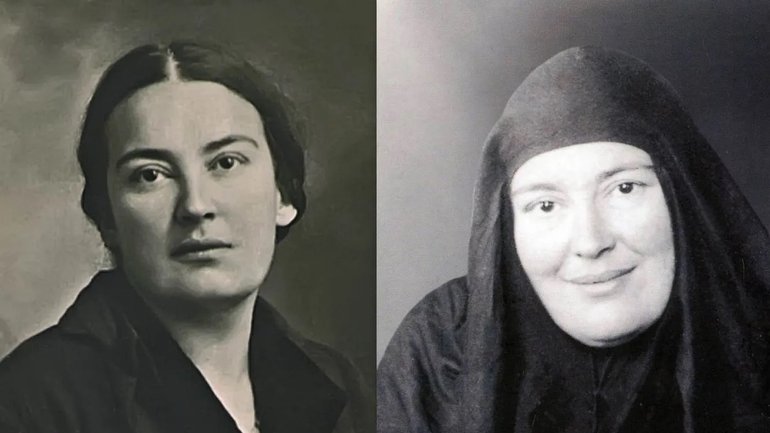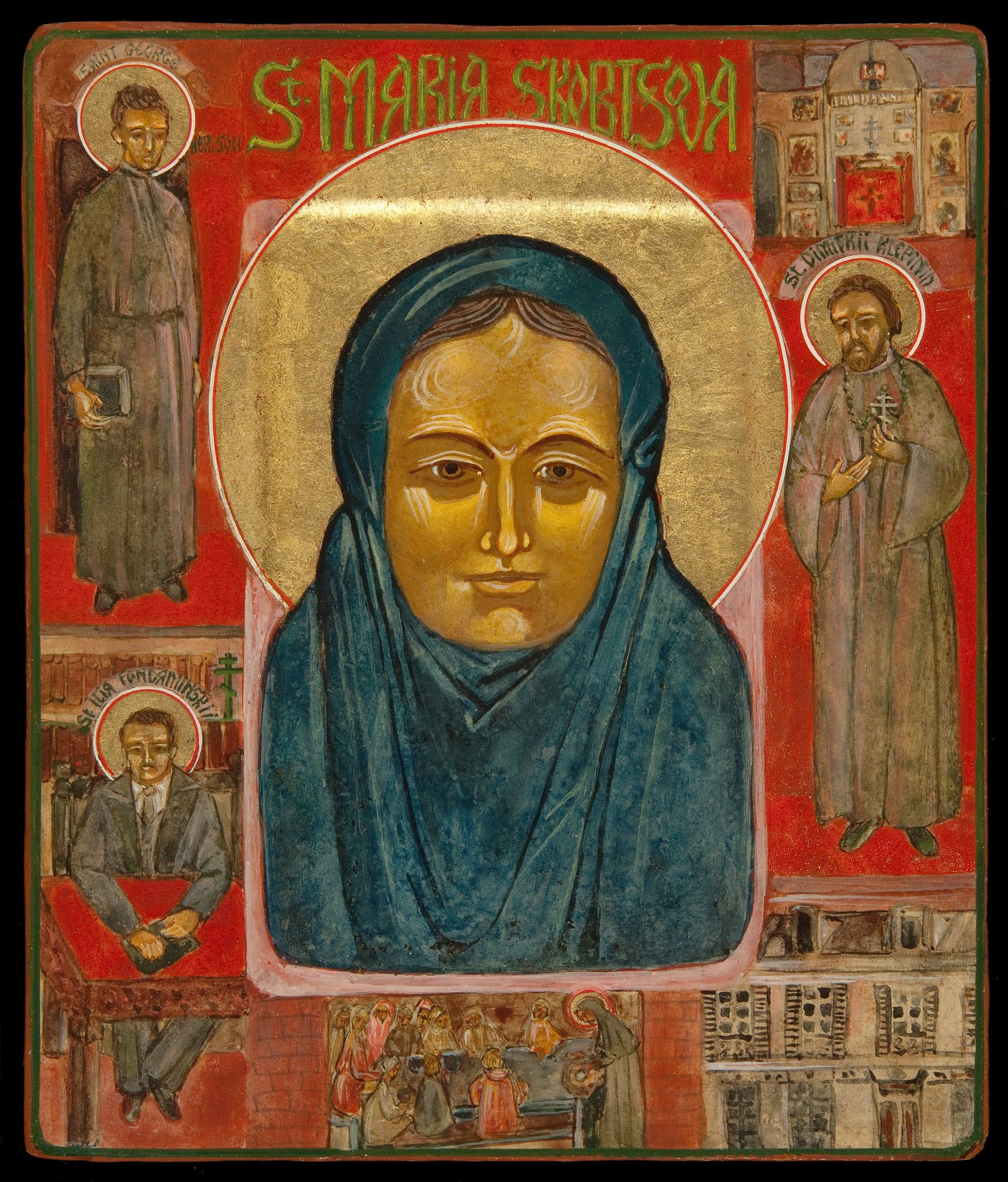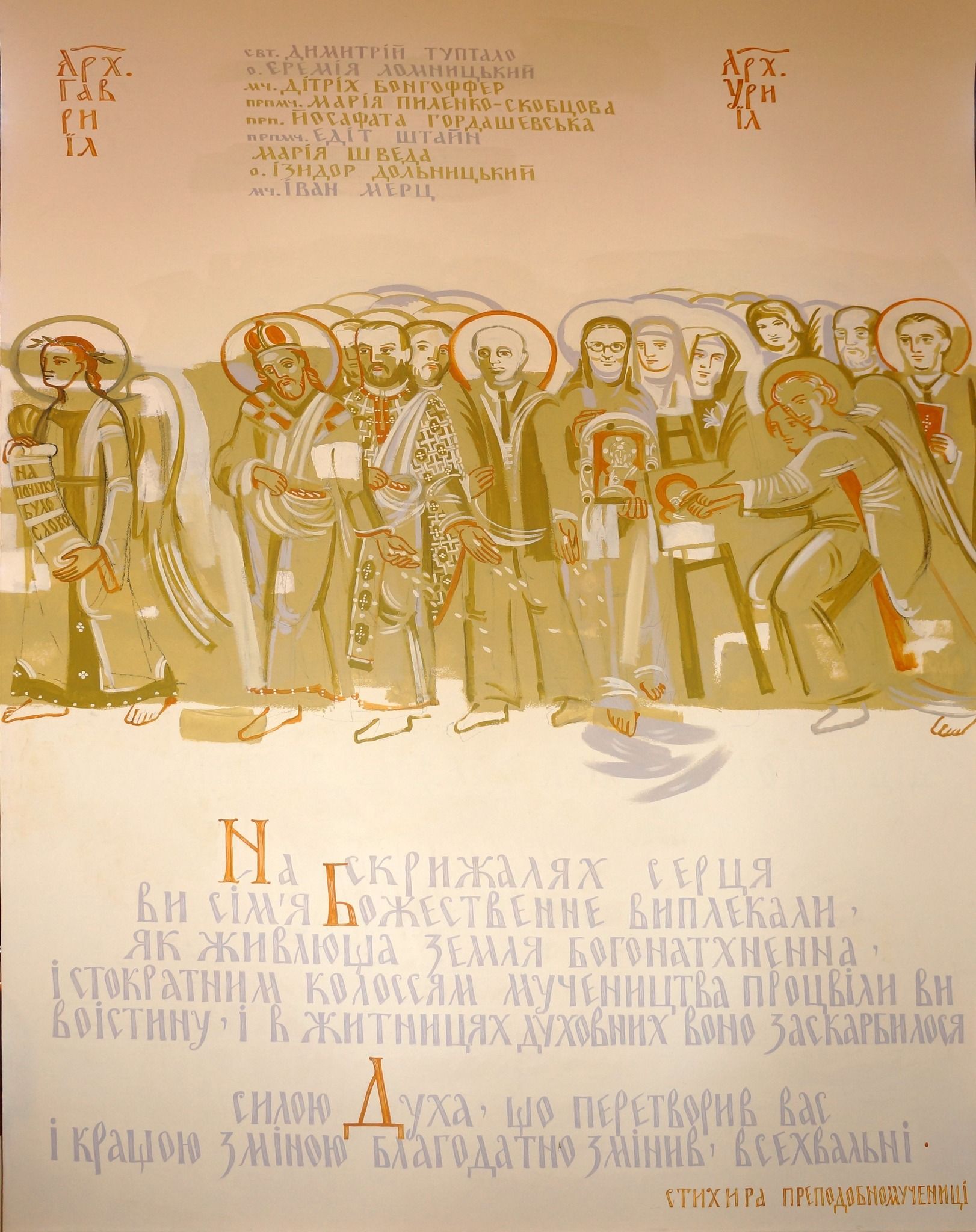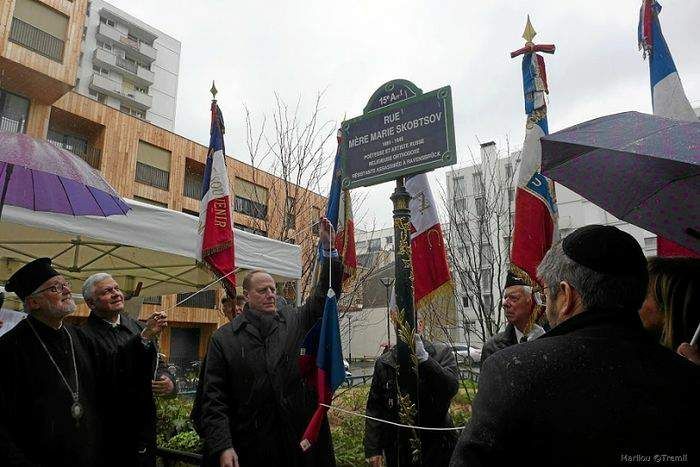The forgotten Ukrainian roots of a famous "French" saint as an example of imperial assimilation

Denationalisation, the erosion of national consciousness and identity, is a common phenomenon among conquered peoples within any empire. For centuries, the Russian Empire pursued this policy of general assimilation: thanks to this, instead of a separate Ukrainian nation and culture, a "single Russian people" was to emerge.
Entire generations of Ukrainians were brought up under the influence of such narratives. In the face of the loss of their Ukrainian statehood, with no prospects for self-realisation and career growth in their colonised, divided and ravaged homeland, many young, educated and ambitious Ukrainians were forced to seek a better life in Moscow and in the vast regions of the empire, where there was a great shortage of educated personnel. Under such circumstances, they were forced to devote considerable energy and talents to building the culture of an empire which was foreign to them.
In Muscovy in the 16th and first half of the 17th centuries, before the injection of Ukrainian creative and intellectual forces, the local culture was a rather closed and little more than an outstanding phenomenon. However, from the second half of the 17th century, many learned Ukrainians contributed to the educational mission (the so-called "Kyiv-Mohyla expansion") in Muscovy. Under the influence of Kyiv-Mohyla scholars and with their direct participation, education was introduced in Muscovy, institutions of learning were founded, new literary works were written, and a large-scale church reform was carried out. A great number of Ukrainian intellectuals contributed to the creation of a new imperial culture, which, according to their plan, was to be "Ukrainianised" to a certain extent. Even the Russian literary language from the late 17th and early 18th centuries began to experience certain Ukrainising influences. The same thing happened in art. And church life almost entirely falls under the "Malorossian dominance" for quite a long time, against which indigenous Muscovites begin to rebel.
Finding self-realisation in the vast and semi-wild expanses of the northern empire, many Ukrainians sincerely believed that by doing so they were also glorifying their own "small homeland". A whole galaxy of prominent figures emerged who were originally from Ukraine but were considered "Russian". This manifested the tragedy of an enslaved nation whose talented and gifted representatives had no prospects in their own homeland. After all, Ukraine was absorbed by the empire and artificially turned into a remote province. They were often forced to give their genius and talents in the service of a foreign state and culture. Very often they had no other choice. At the same time, under the influence of imperial re-education, they often lost their own national roots and identity.
This tragedy was most clearly manifested in the life and work of the Russian-speaking Ukrainian writer Mykola /Nikolai/ Gogol (1809-1852). But many other prominent figures in the fields of culture, religion, and science in the Russian Empire of the 18th and 19th centuries were forced to endure this internal bifurcation and contradiction between their own Ukrainian origins and the imperial assimilatory education that denied them the very right to be Ukrainian. There are many names here, from prominent church hierarchs and saints to philosophers, artists and scientists. Imperial propaganda insistently presented them to the world as "Russians", although they were in fact Ukrainians. Numerous students and teachers of the Kyiv-Mohyla Academy during the 17th and 18th century had a decisive influence on the development of education, literature, and art in the empire. Among them are outstanding educators: Epiphanius Slavinetsky, Arsenii Satanovsky, Symeon of Polotsk, Lazar Baranovych, Stefan Yavorsky, Theophan Prokopovych, Irenaeus Falkovsky, Feofilakt Lopatynsky, Joasaph Krokovsky, Saints Demetrius (Tuptalo) of Rostov, John (Maksymovych) of Tobolsk, Joasaph (Gorlenko) of Belgorod, Theodosii (Uglitsky) of Chernihiv, Raphael (Zaborovsky) of Kyiv, Sophronii (Kristalevsky) of Irkutsk, Pavlo (Koniushkevych) of Tobolsk, Arsenii (Matsievych) of Rostov and others. One vivid example is also St John the Russian, also venerated in Greece, who was in fact not "Russian" at all, but a Ukrainian Cossack.
It's also worth noting that the Ukrainian Hryhoriy /Grigorii/ Skovoroda (1722-1794) influenced the formation of a philosophical school in the empire, and Paisii Velichkovsky (1722-1794) helped revive and renew Orthodox monasticism. Similarly, Pamfil Yurkevych (1826-1874) from Poltava continued to lay the foundations of Christian Platonism and cordocentrism in philosophy. His student was the famous Russian philosopher Vladimir Solovyov (1853-1900), who, in turn, was a great-great-grandson of the Ukrainian wandering philosopher Hryhoriy Skovoroda. Even the writer Fyodor Dostoevsky (1821-1881) had Ukrainian roots; his grandfather Andriy Dostoevsky was a Ukrainian priest from Volyn and signed his name in Ukrainian. Similarly, the prominent composers Maksym Berezovsky (1745-1777), Dmytro Bortnyansky (1751-1825) and Pyotr Tchaikovsky (1840-1893), the painter Ilya Repin (1844-1930), the founder of geochemistry and radiogeology, author of the noosphere doctrine Volodymyr Vernadsky (1863-1945), the inventor of the helicopter Igor Sikorsky (1889-1972), the founder of practical cosmonautics Sergey Korolev (1906-1966), the singer and composer Alexander Vertinsky (1889-1957), the poet Anna Akhmatova (maiden name Horenko, 1889-1966), filmmaker Andrei Tarkovsky (1932-1986), and the choreographer Serge Lifar (1905-1986) had Ukrainian roots. The famous saints Luke (Voyno-Yasenetsky; 1877-1961) and John (Maksymovych; 1896-1966) are in the same line. Other well-known philosophers and theologians who were born and brought up in Ukraine include Archpriest Georges Florovsky (1893-1979), Protopresbyter Vasilii Zenkovsky (1881-1962), Nikolai Berdyaev (1874-1948), and many others.
While we know about their universal fame and recognition, little attention is paid to the country of origin and roots of these prominent figures. Usually, biographers limit themselves to mentioning that they were born in the Russian Empire or the USSR, without mentioning that it was actually Ukraine, under Russian rule at the time. At the same time, the environment in which a person was born, raised and educated plays an important role in shaping their character, consciousness and views. Undoubtedly, the mental, cultural and spiritual characteristics of the Ukrainian people, their traditions and heritage have in one way or another left an impact on those who came from or lived in Ukraine. This aspect is important to take into account when talking about the phenomenon or genius of a particular figure.

Here, as an example, I would like to mention the famous "French" Saint Mary (Skobtsova) of Paris (1891-1945). An Orthodox nun of the Patriarchate of Constantinople, poet, writer, member of the French Resistance, who saved Jewish children from the Holocaust and was executed by the Nazis in the gas chamber of the Ravensbrück concentration camp on 31 March 1945.
In 1985, the Yad Vashem Memorial Centre posthumously awarded her the title of "Righteous Among the Nations", and in 2004, the Ecumenical Patriarchate of Constantinople canonised her as a saint, the Venerable Martyr Mary of Paris. At the same time, the Catholic Archbishop of Paris, Cardinal Jean-Marie Lustiger, noted that the Catholic Church would also honour Mother Mary as a holy martyr and patron saint of France.
On 31 March 2016, a ceremony was held in Paris to open the rue Mère Marie Skobtsova, which is adjacent to the rue de Lourmel in the 15th arrondissement, where Mother Mary lived and worked. The plaque with the name of the new street reads in French: "Street of Mother Marie Skobtsov: 1891-1945. Russian poet and artist. Orthodox nun. Member of the Resistance. Murdered in Ravensbrück".
The French are proud of this name. However, few people pay attention to the fact that Maria's mother was Ukrainian by birth. Everyone is misled by her purely Russian surname, Skobtsova. However, in fact, this is the surname of her second husband. She was married twice; in her first marriage, she bore the surname Kuzmina-Karavayeva, and in her second marriage she married a Kuban activist named Skobtsov, which she later divorced and became a nun.

In her maidenhood, Maria's mother's surname was Pylenko and she belonged to the well-known Ukrainian Cossack family of Pylenko, whose members were descendants of the Zaporizhzhya Cossacks. Her grandfather, Dmytro Vasylovych Pylenko (1830-1895), was born in the south of Ukraine and was the Chief of Staff of the Kuban Cossack Army and the Head of the Black Sea District. His great-grandfather, Vasyl Pylenko, was born in Poltava Region, was an engineer at the Luhansk Foundry and supervisor of Lysychansk coal mining; he first discovered iron ore deposits in Kryvyi Rih, and later was the supervisor of salt mining in Crimea. Vasyl Pylenko's great-great-grandfather was a military commissary and regimental second lieutenant (“Woźny” and “Regimental Chorunżyj”) of the First Zinkiv Sotnia (the “Centuria” was an administrative-territorial, judicial and military unit within a regiment during the existence of the autonomous system of the Ukrainian lands of the Hetmanate in the 17th and 18th centuries) of the Hadiach Cossack Regiment, later promoted to the rank of second major and appointed treasurer of the Zinkivskyi district in Poltava Region in 1788: he died in 1794. Vasyl Pylenko's father also served in the First Zinkiv Sotnia of the Hadiach Regiment, and his grandfather Mykhailo Pylenko held the title of “Military Comrade” (“Viys’kovyi tovarysh”) of the Hadiach Regiment.
The "ancestral home" of the Pylenko Cossacks was the town of Zinkiv, the Sotnia’s centre of the Hadiach Cossack Regiment in the Poltava Region.
Thus, as can be seen, St Mary of Paris was Ukrainian by birth, although she was brought up in the Russian tradition. Skobtsova was her surname during her second marriage, which she later dissolved when she entered the monastic state.
After her canonisation, the martyr is often referred to by her second husband's secular surname, Skobtsova, as if to emphasise her "Russian roots". According to a widespread erroneous practice, she was even recorded in the church calendar in Ukraine in this way. In particular, the decision of the Synod of the OCU dated 14 July 2023 states: " add to the church calendar St Mary (Skobtsova) of Paris (1945) with a day of remembrance on 31 March according to the Revised Julian calendar, the day of her martyrdom."

However, this practice, which has become widespread recently, raises some doubts. Although Mother Mary did not change her surname in her civil documents after her divorce in France (at that time it was a rather complicated bureaucratic procedure), it is not entirely correct in monasticism to refer to her by the secular surname of her second husband. In addition, it is generally not customary to refer to saints in liturgical practice by their secular surname.
It would probably be more correct to call her by her maiden name, Pylenko, or at least the double name "Pylenko-Skobtsova", which would be more accurate from a historical and biographical point of view.
In any case, St Mary of Paris is the heiress of a glorious Ukrainian Cossack family. Undoubtedly, the national features of her Cossack family were also reflected in her freedom-loving character... And this is worth remembering both in Ukraine and in France.
This example shows how the assimilating Russian imperial influence continues to be subconsciously preserved even in other countries today. Until recently, few people in the world knew or paid attention to Ukraine, its uniqueness, history and heritage. Ukrainians were perceived mainly through the vision of Russian imperial narratives, as part of the so-called "Russian world". Russia's war against Ukraine, the heroic and self-sacrificing resistance of Ukrainians to Russian aggression, and their desperate struggle for their freedom, independence and identity made the world realise that they knew almost nothing about Ukrainians, including those who lived among them and became famous in various fields. These Ukrainians, even though they were Russified and brought up in a foreign tradition, remain vivid representatives of Ukraine. We have no right to abandon them and their heritage. They are also the pride of Ukraine and its colourful and multifaceted culture, equivalent to the great cultures of other nations of the world. By filtering out certain imperial layers of their heritage, which sometimes arose because of their upbringing and due to the absence of Ukrainian statehood, we must return these names to the Ukrainian treasury of world culture. Therefore, there is still much work to be done to decolonise Ukrainian heritage and restore historical justice. Russia's war of conquest against Ukraine, the denial by Russian imperialists of even the right to a separate Ukrainian identity and attempts to "finally resolve the Ukrainian question" only further actualise this issue.
Serhii Shumylo,
Ph.D. in History, ThDr., Director of the International Institute of the Athonite Legacy;
Research Fellow in the Department of Classics, Ancient History, Religion and Theology, University of Exeter (UK);
Research fellow of the Institute of History of Ukraine, National Academy of Sciences of Ukraine; Honoured Worker of Ukraine Culture









